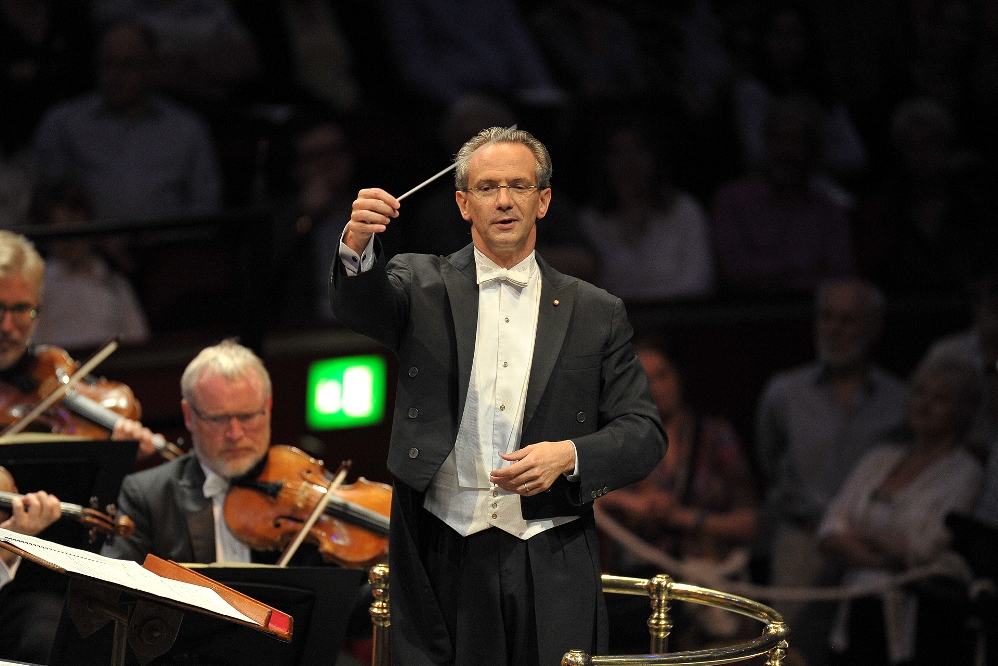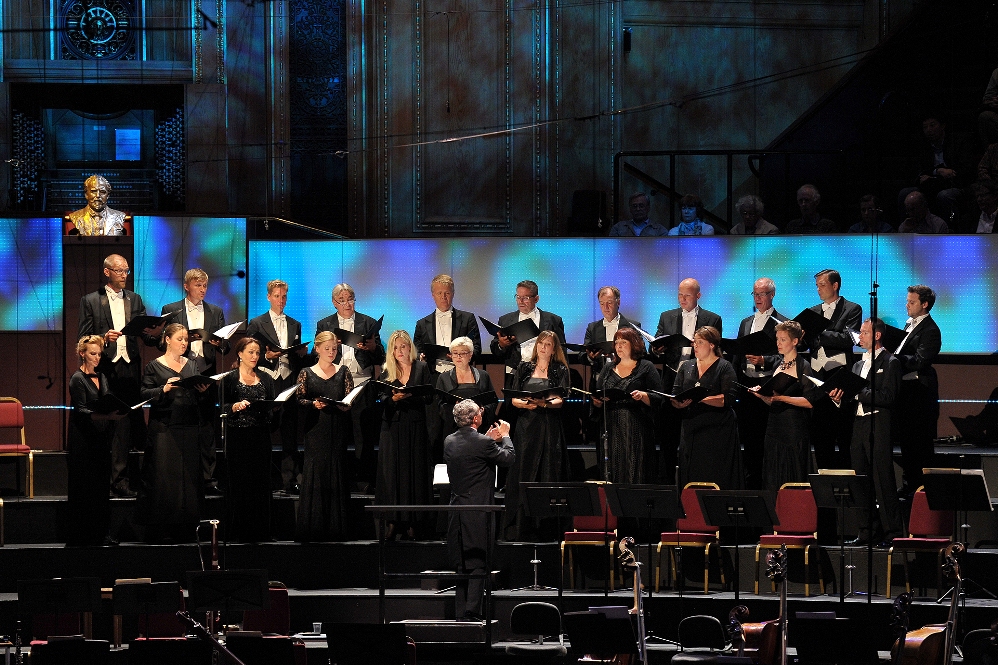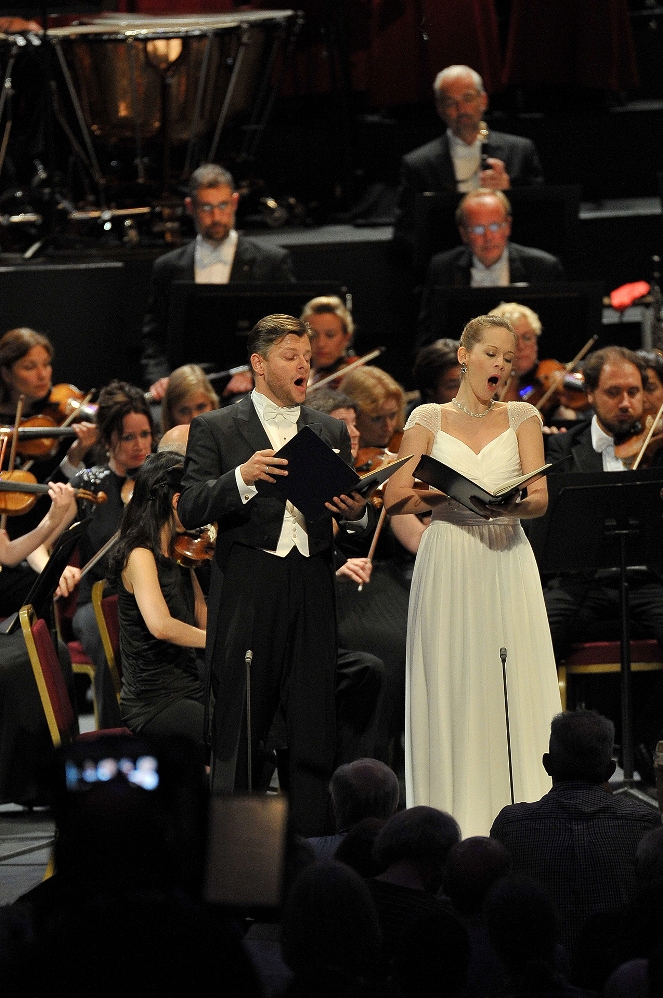Prom 46: Znaider, Danish NSO, Luisi | reviews, news & interviews
Prom 46: Znaider, Danish NSO, Luisi
Prom 46: Znaider, Danish NSO, Luisi
Legendary Brahms playing flanked by a cornucopia of 150th birthday Nielseniana
Praise be to Carl Nielsen. Praise always, of course, to one of the greatest symphonists, and happy 150th birthday (again), but gratitude on this occasion is due to a programme mostly lining up Nielsen works rare and familiar, for getting me to the Albert Hall to witness a surely unsurpassable performance of the Brahms Violin Concerto.
It helps that Znaider recently conducted Nielsen’s Third Symphony in Odense and will return to this superb team, the Danish National Symphony Orchestra who gave such a corker of a Prom five years ago, to tackle Bruckner’s Ninth Symphony this coming season. Even so, as he turned to listen to his compatriots between playing in the Brahms, he must have been impressed by the minutest gradations of tone and expression wrought by their Principal Conductor in waiting, Fabio Luisi (pictured below) – a deservedly busy man also heading Zurich Opera and the Met.

After the sheer joy of the finale, Znaider returned, telling us that there was more to Denmark than "Lego and pastries" - as if we didn't know - and dedicating his encore to his colleagues while flying in the face of a daft BBC veto of "no more Bach" - "better to ask for forgiveness later than permission before" - by playing a Bach Chaconne. Pure introspective perfection, and if, as Alexandra Coghlan rightly noted here recently, you tend to remember a violinist’s Bach encore at the Proms more than the performance of the concerto, that’s never going to be the case here. All this was the stuff of which legends are made.

Where but at the Proms would you find a professional Danish choir of nearly 100 allied to the Boy and Girl Choristers of Winchester Cathedral, large orchestra and two perfect soloists – soprano Anna Lucia Richter and tenor David Danholt (pictured below) – for a 25-minute piece? You’d think that a “Hymn of Love” inspired by a Titian painting would be a sensuous wallow, but sensuousness is one thing not in Nielsen’s armoury.

Much is made of the portraits of choleric, phlegmatic, melancholy and sanguine characters Nielsen saw in an inn, but the four movements are surely aspects of his own personality, serious even when seemingly joky, and Luisi made the most of the thematic links between the dreamy walking pace of the “Allegro comodo e flemmatico” and the “Andante malincolico”, unfurling a line with all the masterly control of a born Bruckner and Wagner conductor.
More surprising was his ability to rollick, and if the Albert Hall isn’t the right place to catch all the fiery detail of the outer movements, the “Danish Elgar” peroration could only remind us of a potted Pomp and Circumstance (the proudly ennobled finale rtheme at the very end even resembles the trio of Elgar’s Second March). There could only be one encore, since Sakari Oramo had taken the pell-mell Overture to Nielsen’s comic opera Maskarade on the First Night of the Proms: Maskarade's "Dance of the Cockerels", a perfect showcase for the Danes' and Luisi’s deft dancing, with original touches in the central sequence from an equally original, absolutely world-class ensemble.
- Listen to this concert for the next month on the BBC iPlayer
- Watch the performances of the Helios Overture and the Second Symphony on BBC Four on Sunday
- 150th birthday greetings to Nielsen on David Nice's blog
Read theartsdesk's reviews of other concerts from the BBC Proms
rating
Share this article
The future of Arts Journalism
You can stop theartsdesk.com closing!
We urgently need financing to survive. Our fundraising drive has thus far raised £49,000 but we need to reach £100,000 or we will be forced to close. Please contribute here: https://gofund.me/c3f6033d
And if you can forward this information to anyone who might assist, we’d be grateful.

Subscribe to theartsdesk.com
Thank you for continuing to read our work on theartsdesk.com. For unlimited access to every article in its entirety, including our archive of more than 15,000 pieces, we're asking for £5 per month or £40 per year. We feel it's a very good deal, and hope you do too.
To take a subscription now simply click here.
And if you're looking for that extra gift for a friend or family member, why not treat them to a theartsdesk.com gift subscription?
more Classical music
 Scott, Irish Baroque Orchestra, Whelan, RIAM, Dublin review - towards a Mozart masterpiece
Characteristic joy and enlightenment from this team, but a valveless horn brings problems
Scott, Irish Baroque Orchestra, Whelan, RIAM, Dublin review - towards a Mozart masterpiece
Characteristic joy and enlightenment from this team, but a valveless horn brings problems
 Classical CDs: Voice flutes, flugelhorns and froth
Baroque sonatas, English orchestral music and an emotionally-charged vocal recital
Classical CDs: Voice flutes, flugelhorns and froth
Baroque sonatas, English orchestral music and an emotionally-charged vocal recital
 Kanneh-Mason, Britten Sinfonia, Shave, Milton Court - a grin and a big beaming smile
A pair of striking contemporary pieces alongside two old favourites
Kanneh-Mason, Britten Sinfonia, Shave, Milton Court - a grin and a big beaming smile
A pair of striking contemporary pieces alongside two old favourites
 theartsdesk at the New Ross Piano Festival - Finghin Collins’ musical rainbow
From revelatory Bach played with astounding maturity by a 22 year old to four-hand jazz
theartsdesk at the New Ross Piano Festival - Finghin Collins’ musical rainbow
From revelatory Bach played with astounding maturity by a 22 year old to four-hand jazz
 First Person: Manchester Camerata's Head of Artistic Planning Clara Marshall Cawley on questioning the status quo
Five days of free events with all sorts of audiences around Manchester starts tomorrow
First Person: Manchester Camerata's Head of Artistic Planning Clara Marshall Cawley on questioning the status quo
Five days of free events with all sorts of audiences around Manchester starts tomorrow
 Goldscheider, Brother Tree Sound, Kings Place review - music of hope from a young composer
Unusual combination of horn, strings and electronics makes for some intriguing listening
Goldscheider, Brother Tree Sound, Kings Place review - music of hope from a young composer
Unusual combination of horn, strings and electronics makes for some intriguing listening
 theartsdesk Q&A: composer Donghoon Shin on his new concerto for pianist Seong-Jin Cho
Classical music makes its debut at London's K-Music Festival
theartsdesk Q&A: composer Donghoon Shin on his new concerto for pianist Seong-Jin Cho
Classical music makes its debut at London's K-Music Festival
 Helleur-Simcock, Hallé, Wong, Bridgewater Hall, Manchester review - moving lyricism in Elgar’s concerto
Season opener brings lyrical beauty, crisp confidence and a proper Romantic wallow
Helleur-Simcock, Hallé, Wong, Bridgewater Hall, Manchester review - moving lyricism in Elgar’s concerto
Season opener brings lyrical beauty, crisp confidence and a proper Romantic wallow
 Kohout, Spence, Braun, Manchester Camerata, Huth, RNCM, Manchester review - joy, insight, imagination and unanimity
Celebration of the past with stars of the future at the Royal Northern College
Kohout, Spence, Braun, Manchester Camerata, Huth, RNCM, Manchester review - joy, insight, imagination and unanimity
Celebration of the past with stars of the future at the Royal Northern College
 Jansen, LSO, Pappano, Barbican review - profound and bracing emotional workouts
Great soloist, conductor and orchestra take Britten and Shostakovich to the edge
Jansen, LSO, Pappano, Barbican review - profound and bracing emotional workouts
Great soloist, conductor and orchestra take Britten and Shostakovich to the edge

Add comment